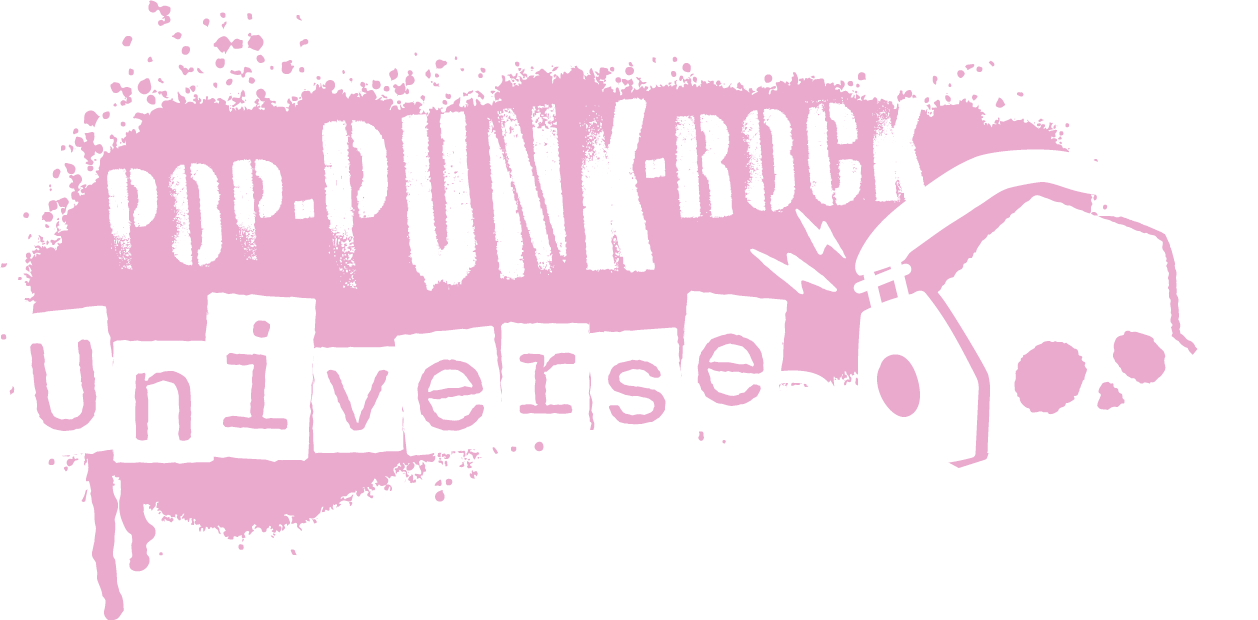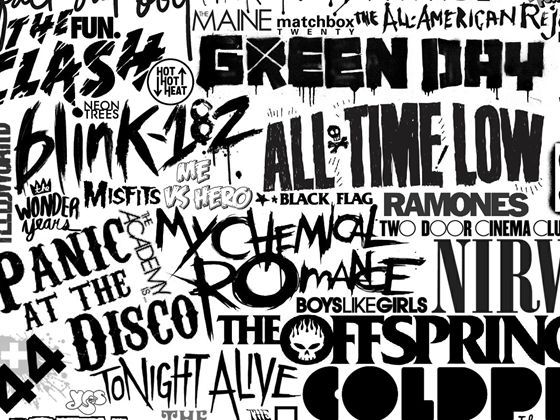(Translation of the French version – For the original click on the French flag above)
After listening to Blink 182, Sum 41, and other bands of the sort years ago, I wanted to learn more about the musical style their songs belonged to. When I did my research back then, I was struck by the multitude of musical genres that existed around the generic term punk rock. Quite honestly, I was a bit lost at the beginning. And since then, I’ve realized that I was far from being the only one. That’s why I thought to myself: Punk rock, pop punk, emo, skate punk… what are we really talking about? What lies behind each of these terms? This is a topic that should help many people see things more clearly.
So, punk rock or not punk rock? The goal here isn’t to categorize bands. Anyway! A band can fall into several of these genres depending on the song considered or the moment in their career. The idea here, is to try to see a bit more clearly between the different styles of punk music that I propose, for the most part, to discover on Pop Punk Rock Universe.
The origins: Punk Rock
Let’s start at the beginning with the founding style of all the musical genres we love: Punk Rock. It was born in the 70s and it’s much more than a musical genre: it’s a cultural revolt. Its roots are found in the social and political dissatisfaction of the time. This movement emerged as a battle cry against the establishment, favoring raw and unadorned expression. The first punk bands, such as The Ramones in the United States and the Sex Pistols and The Clash in the United Kingdom, or even The Saints in Australia, laid the groundwork. Fast sounds, provocative lyrics, and a Do It Yourself (DIY) mood that defied the music industry then dominated by progressive rock and disco.
These punk pioneers not only changed the way music was played, listened to, and perceived, but they also ushered in a new era of performance. This was characterized by an unprecedented closeness between the artists and their audience, which would contribute to the genre’s success. Iconic songs like “Blitzkrieg Bop” by the Ramones, “Anarchy in the UK” by the Sex Pistols, and “London Calling” by The Clash, have become generational anthems that continue to resonate.
The influence of punk rock goes far beyond its origins. Indeed, it has spawned a multitude of sub-genres that explore and reinvent its legacy. From hardcore to pop punk, through ska punk and emo, these developments illustrate the adaptability of punk and its indelible impact on modern music that makes us still love it so much. Let’s start the exploration of this legacy!

The cool Kid: Pop Punk
We start with pop punk, a music genre for which my love originally sparked the creation of PPRU. It’s a dynamic sub-genre of punk rock that blends the aggression and rebellious spirit of punk with catchy melodies and pop harmonies. It emerged in the 90s, marking a transition from traditional punk to a more accessible sound. Nevertheless, it retains the raw energy and non-conformist attitude inherent to original punk. This unique alchemy allowed pop punk to captivate a broader audience, especially among the youth. Particularly by addressing universal themes such as love, friendship, insecurity, and the challenges of adolescence.
Iconic bands like Green Day, Blink-182, and Sum 41 have been at the forefront of this movement. They propelled the genre onto the international stage with albums that have become classics. With hits like “Basket Case” by Green Day, “All The Small Things” by Blink-182, and “Fat Lip” by Sum 41, pop punk has firmly entrenched itself in musical culture, influencing numerous artists and bands to this day.
Finally, the success of pop punk in the 2000s was facilitated by its integration into pop culture. Iconic tracks and bands thus appear in the soundtracks of movies, TV shows, and video games. Despite fluctuations in popularity over the years, pop punk remains alive. The style evolves with new bands bringing their own touch while staying true to punk’s roots of protest and independence. In recent years, there has indeed been a real revival of this musical style. Old bands are making comebacks (Blink 182), promising newcomers from various backgrounds (Girlfriends) are appearing, and others have always been there (Sum 41).

The Introspective: Emo
Emo, short for “emotional hardcore,” is a sub-genre of punk rock characterized by its introspective and expressive lyrics. It explores themes of pain, sadness, disillusionment, and self-expression. Its roots can be traced back to the hardcore punk scene in Washington D.C. in the mid-1980s. Emo has evolved to encompass a wide range of musical styles. Early bands like Rites of Spring and Embrace introduced a more personal and sensitive approach to punk music. This allowed for the creation of a genre that contrasted with the raw energy and traditional aggression of punk.
Throughout the 1990s, emo diversified and gained popularity with bands like Sunny Day Real Estate and Jawbreaker. They expanded the sound and scope of the genre, mixing soft melodies with distorted guitars to create a unique and captivating sound. This era saw emo branch into several directions, ranging from indie emo to screamo, a more intense and chaotic version of the genre.
The early 2000s marked the golden age of emo. Bands like My Chemical Romance, Fall Out Boy, and The Used brought the genre to the forefront of the commercial scene. These bands managed to capture the attention of a global audience with their energetic performances, emotionally charged lyrics, and distinctive aesthetic. Often the subject of controversy and misunderstandings, emo’s impact on musical culture and its ability to create a community around vulnerability and sincere expression remains undeniable. This style is experiencing a true renewal with new bands like the French 20:02 and emo nights being organized everywhere.

The Turbulent: Skate Punk
Skate punk, also known as melodic hardcore, is an energetic style that emerged in the 80s. It combines the speed and aggression of hardcore punk with catchy melodies and harmonies. This style is closely linked to skateboarding culture, embodying the spirit of freedom, rebellion, and nonconformism characteristic of skaters. Lyrics often address themes such as friendship, personal freedom, and social critique, resonating with the youth and skate subculture.
Bands like Bad Religion, NOFX, and Pennywise are iconic figures in skate punk. These groups have not only influenced punk music but have also created bridges to other genres, including pop punk and surf punk, through their melodic approach to punk.
Skate punk embraces the DIY approach, reflecting the essence of punk while incorporating elements of skate culture. The music often serves as the soundtrack for skate videos, reinforcing the connection between the music and the sport. The iconic Tony Hawk’s video game series cannot go unmentioned. These games have left a mark on an entire generation by propelling skate punk into the spotlight. Over the years, skate punk has evolved, incorporating influences from various genres. However, its core remains rooted in the raw energy and rebellious attitude that characterized its beginnings.
Despite shifts in musical trends, skate punk maintains a devoted fan base, attesting to its enduring impact on music and youth culture. The newcomers to this style, such as Dead Bundy, have nothing to envy their predecessors. To be listened to at full volume at the skate-park!

The Aggressive: Hardcore Punk
Hardcore punk, often simply called hardcore, is characterized by its faster, heavier, and more aggressive music compared to its predecessors. Born in the late 70s, early 80s, it emerged as a direct response to the perceived commercialization and dilution of original punk rock. Hardcore thus seeks to return to the rebellious roots of the movement.
Bands like Black Flag, Minor Threat, and Bad Brains, among others, were pioneers in this style. They emphasized fast tempos, sharp guitar riffs, and lyrics expressing frustration, alienation, and a desire for social change. Hardcore punk not only influenced music but also helped to forge a tight-knit community around the scene, fanzines, and independent labels.
Hardcore gave birth to a multitude of sub-genres and has influenced many other music styles. Sum41, for example, today does not hesitate to mix the sounds of hardcore punk with those of heavy metal to give us heavy metalcore tracks. We could also mention the French from Landmvrks. Melodic hardcore introduced more pronounced melodies without sacrificing aggression. Moreover, screamo, a more experimental and emotional form of hardcore, emerged in the 90s, significantly influencing the emo music landscape.
Hardcore punk is still very present in underground music. It symbolizes the spirit of resistance and independence that has characterized punk from its origins. Its influence extends beyond its own sphere, touching various genres and continuing to inspire artists around the world.

The Friendly (and Committed): Ska Punk
Ska punk merges the rebellious energy of punk rock with the dancing rhythm and characteristic brass of ska, a musical genre originating from Jamaica in the 1960s. This combination has given birth to a unique and dynamic sub-genre worldwide. It is marked by bands such as The Mighty Mighty Bosstones, The Planet Smasher in Canada, or Ska-P in Spain, who have introduced ska to a new generation. It is characterized by its musical optimism, its often committed lyrics, and its ability to get crowds dancing.
Ska punk played a crucial role in popularizing ska outside of Jamaica by mixing it with the urgency and accessibility of punk. This fusion allowed the genre to reach a wide audience. Ska elements have also permeated pop punk and skate punk, underscoring the interconnected influence of these genres.
Beyond its impact on music, ska punk has encouraged a culture of diversity and unity. It brings together fans from different backgrounds around energetic concerts and festivals. Cultural exchanges between ska and punk have promoted musical exploration, leading to innovations and continuous experimentation in sound and performance.
Ska punk stands out not only for its unique blend of sounds but also for its influence on the global music scene, inspiring dialogues between various musical genres and fostering a committed community around shared values of enjoyment, respect, and constructive rebellion.

The Innovative: Post-Punk
Post-punk is a diverse and experimental music genre that emerged in the late 1970s, following the first wave of punk rock. This style is characterized by its avant-garde approach, incorporating varied influences from electronic music and funk to industrial music and minimalism. Post-punk bands, such as Joy Division, Siouxsie and the Banshees, and Talking Heads, rejected the conventional formulas of rock to explore new sound textures, complex musical structures, and darker, more introspective lyrical themes.
Post-punk stands out primarily for its sound experimentation and innovative use of synthesizers and guitar effects. It also features rhythms and melodies that diverge from the direct and raw approach of punk. This willingness to experiment paved the way for numerous sub-genres and musical movements,. Including new wave, gothic, and indie rock, each borrowing and further developing elements initiated by post-punk.
The genre has also had a significant influence on alternative and electronic music. Artists and bands from subsequent decades have drawn from its sonic aesthetic and ethos. Post-punk encouraged a musical exploration that transcends the traditional boundaries of rock, contributing to the diversity and richness of contemporary music.
Post-punk is not only a genre in itself but also a catalyst for innovation in modern music. It promotes a culture of creativity and experimentation that continues to influence a multitude of music styles.

The Mainstream: Alternative Rock
Alternative rock, often simply called “alternative,” is a musical genre that emerged as a counter-culture to mainstream rock. In the 1980s and 1990s, alternative rock became a broad and umbrella genre, encompassing everything from grunge, britpop, indie rock, to shoegaze and post-rock. Bands like R.E.M., Pixies, and Nirvana played a crucial role in popularizing alternative, each bringing a unique and innovative approach that challenged musical conventions.
Although it shares some roots with punk rock, it is not, strictly speaking, a sub-genre of punk. The link between the two lies more in their attitude and approach to music. The genre facilitated a fusion of styles, leading to the emergence of new sub-genres and influencing the development of independent music. Alternative also contributed to a musical dialogue between cultures, incorporating elements of electronic music, folk, and even world music, thereby broadening its impact and cultural relevance.
Thus, alternative rock serves as a bridge between various musical currents from punk and beyond. It enriches the musical landscape with its diversity and refusal of traditional genre boundaries. Its influence continues to be felt in contemporary music. Many artists from the worlds of rap or hip-hop often being classified in this genre when they enrich their repertoire with very pop punk sounds, such as Machine Gun Kelly or Mod Sun.

Resonances and Metamorphoses of a Genre
Exploring punk rock and its numerous sub-genres and associated styles, we dive into a rich musical ecosystem. It has profoundly influenced not only musical culture but also all of modern pop culture. From the initial punk rock, with its spirit of rebellion and DIY approach, to the most modern branches that have emerged, each style embodies a unique facet of this musical universe.
Pop punk, with its catchy melodies and accessible themes. Hardcore punk, with its raw intensity and poignant social messages. Emo, with its emotional vulnerability. Ska punk, with its joyful and danceable energy. Post-punk, with its sound experimentation and lyrical depth. All testify to punk’s ability to evolve and adapt to cultural and musical changes. Alternative rock, as a catalyst for these various influences, has captured the essence of punk while opening up new musical horizons. The complete list would be too long to present here. Other sub-genres clearly deserve attention, such as surf punk or celtic punk, to name just a few.
These genres are not just musical categories. They reflect a continual quest for identity, expression, and community. By defying conventions, breaking barriers, and celebrating diversity, punk rock and its derivatives continue to inspire and motivate. This is clear proof that music is a powerful vehicle for change and personal expression.
I hope this article has helped you see things a bit more clearly. Don’t hesitate to join the community with PPRU. Follow us on social networks and music apps to discover the richness of this Punk universe.



